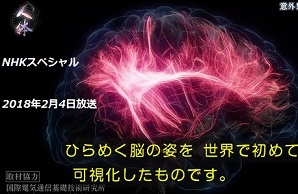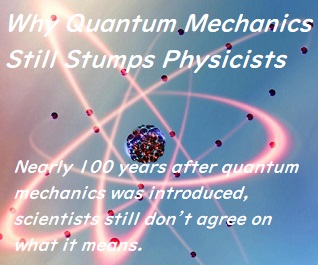非論証的推論(がもとづくところ)の論証(実証)不可能な諸前提が精確にどういう認識論的機能をもつかを説明する前に、帰納法についてもう少し述べておかなければならない。
先に述べたように、帰納法は非論証的推論の前提の一つではない。しかしそれは、帰納法が用いられていないからなのではない。帰納法が用いられている形式では、帰納法法自身、論証(実証)不可能なものではないからである。ケインズは(彼の)『確率論』(Treatise on Probability)において、帰納法を数学的確率論から導出する可能性について、きわめて優れた調査研究を行った。 彼が論究した問題はこうであった(次のごとくであった)。「AはBである」という事例のいくつかが与えられ、反対に「AがBでない」事例は存在せず、しかも「AがBである」という事例の数が増加してゆく場合に、いかなる条件の下において、「すべてのAがBである」という一般命題の確率は、極限としての確実性(訳注:つまり絶対確実)に近づくか(という問題であった)。 彼の到達した結論は、そのような確実性に達するには二つの条件が充たされねばならないということである。この二つの条件のうちで第一の、しかも、より重要なものは、「AがBである」という個別的事例を我々が知る前に、「全てのAはBである」という一般命題が他の知識の基礎の上に(on the basis of the remainder of our knowledge)有限な確率を持っていなければならないということである。第二の条件は、その一般命題(「全てのAはBである」)が偽である場合には、「AはBである」という肯定的な個別的事例のみを我々は観察する(目撃する)確率が、推論の数を十分に増せば,極限としての零(ゼロ)に近づくということである。そしてケインズは、この第二条件が 満足されるのは次の場合であることを見出した。すなわち、もしその一般命題が偽でありかつすでに (n-1) 個のAがBであることが見出されているならば、次のn番目の「AがBである」ことの見込みが、 nを十分に大きくとれば、常にPより小であると言えるような、ある確率P(これは確実性には 達しない) が存在する場合である。
これら二つの条件のうち第二のものは第一のものほど重要でなく、またそれについての不都合な問題 はるかに少ない。それで私は第一の条件にもっぱら注意を向けることにする。
Chapter 16: Non-Demonstrative Inference , n.13 Before explaining the exact epistemological function of the indemonstrable premisses of non-demonstrative inference something further must be said about induction. Induction, as I said above, is not among the premisses of non-demonstrative inference. But this is not because it is not used; it is because in the form in which it is used it is not indemonstrable. Keynes, in his Treatise on Probability, made an extremely able investigation of the possibility of deriving induction from the mathematical theory of probability. The question that he had to investigate was this: given a number of instances of As which are Bs and no contrary instances, in what circumstances does the probability of the generalization ‘all A is B’ approach certainty as a limit when the number of As that are Bs is continually increased? The conclusion that he arrives at is that two conditions must be fulfilled if this is to happen. The first and more important of these conditions is that, before we know any instances of As that are Bs, the generalization ‘all A is B’ should have a finite probability on the basis of the remainder of our knowledge. The second condition is that the probability of our observing only favourable instances, if the generalization is false, should tend to zero as a limit when the number of inferences is sufficiently increased. This condition is found by Keynes to be satisfied if there is some probability short of certainty, say P, such that, given that the generalization is false and that n-1 As have been found to be Bs, the chance that the nth A will be found to be a B is always less than P provided n is sufficiently great. The second of these two conditions is less important than the first and is also much less inconvenient. I shall concentrate attention upon the first of the two conditions.
Source: My Philosophical Development, 1959, by Bertrand Russell
More info. https://russell-j.com/beginner/BR_MPD_16-130.HTM
月別アーカイブ: 2022年4月
ラッセル『私の哲学の発展』第16章 「非論証的推論語」n.12

科学的推論の正当性を理由づけるために必要な一般原理は、通常の意味で(意味において)、証明が可能なものではない。それらの原理は、全く明白であると思われる個別的な事例(場合)-たとえばさきほどの’AがBに(自分が言ったことを)書取らせる事例’- から分析によって蒸留されたものである。 「動物的な期待」と私の名づけるものから、 量子物理学の最も洗練された法則にいたる漸次的発展がある。全てのプロセスは、Aを経験し(そうして)Bを期待するということから始まる。動物はある一定の香り(a certain smell 腐っていない場合の匂い)を嗅いで、食べてよい食物だと予想する(期待する)。この期待がたいてい(usually)はずれるということになれば、その動物は死ぬであろう(訳注:何度もお腹を壊し、死に至る/動物はこのようにして食べてよいもの・ダメなものを子孫に伝え生き延びてきたということ)。進化と環境への適応とにより - 期待は論理的に実証可能な範囲を超えるけれども - そういう期待は外れるよりも当たる方が多くなる。いったい自然は一種の傾向(habits 習慣)をもつといってよいであろう(We may say)。そうして、動物の習慣(傾向)は、もしその動 物が生きつづけるべきならば、自然の習慣(傾向)に対するある一定の適応をもたなければならない。
こういう議論は、もしデカルト風の懐疑論に対抗して用いるなら、お粗末な議論(a poor argument 貧弱な論証)であろう。しかし、我々は、懐疑論から出発するなら、どこにも到達できないだとうと私は考える(←到達できるとは思わない)。我々は、普通に知識 と思われるものは、それを退ける何か特定の理由がない限り、幅広く知識として受けいれることから出発しなければならない。(もちろん)仮説としての懐疑論は論理的解剖(dissection 詳細な分析)のためには有益である。それは、前提のいづれかを捨てればどこまで進むことができるかということを我々が理解することを可能にする。たとえば、平行線の公理なしで幾何学のどれだけの範囲が成り立ちうるか(可能か)を探究することができる。しかし、仮説的な懐疑論が有益なのはそのような目的に対してだけである。
Chapter 16: Non-Demonstrative Inference , n.12
The general principles necessary to validate scientific inferences are not susceptible of proof in any ordinary sense. They are distilled out by analysis from particular cases which seem totally obvious, like the one that I gave a moment ago in which A dictates to B. There is a gradual development from what I call ‘animal expectation’ up to the most refined laws of quantum physics. The whole process starts from experiencing A and expecting B. An animal experiences a certain smell and expects the food to be good to eat. If its expectation were usually mistaken, it would die. Evolution and adaptation to environment cause expectations to be more often right than wrong, although the expectations go beyond anything logically demonstrable. Nature, we may say, has certain habits. The habits of animals must have a certain adaptation to the habits of nature if the animals are to survive. This would be a poor argument if employed against Cartesian scepticism. But I do not think it is possible to get anywhere if we start from scepticism. We must start from a broad acceptance of whatever seems to be knowledge and is not rejected for some specific reason. Hypothetical scepticism is useful in logical dissection. It enables us to see how far we can get without this or that premiss ? as, for example, we can inquire how much of geometry is possible without the axiom of parallels. But it is only for such purposes that hypothetical scepticism is useful. Source: My Philosophical Development, 1959, by Bertrand Russell More info. https://russell-j.com/beginner/BR_MPD_16-120.HTM
ラッセル『私の哲学の発展』第16章 「非論証的推論語」n.11

非論証的推論において非常に有用と思われたもうひとつの概念、即ち、「構造」 (structure) の概念がある。我々がある方向に赤を見、他の方向に青を見るとき、一方の方向に起っ ていることと他の方向に起っていることとの間には何らかの相違があると考える(推測する)ことは合理的であると思われる。従って、色の感覚(色を感じ取る能力)の外的原因は、感覚が色をもつのと同じ意味でそれ自身が色付けされてはいないと認めざるを得ないかも知れないけれども、それにもかかわらず、我々がいくつかの色のパターン(例:赤い色のパターン)を見る時、色の感覚を生み出す原因の中にも同様のパターンが存在するに違いない,ということになる(It follows that - 構造上の相似があるはず、ということ)。因果的に結合している事象の一つの系を通して、しばしば一定不変(remains constant)に維持される,あるいは,近似的に一定不変に維持されるものとしての時=空構造(space-time structure)という概念は、きわめて重要かつ実り多いものである。ごく簡単な例をとってみよう。(たとえば)Aがある本を音読し、Bがそれを聞いて書き取り、そうして、Aがその本の中に見たものはBが書きとったものと言語上一致している場合、次の4組の事象の間の因果的結合を否定することは全く不合理だろう。つまり、 (1) 本の中に印刷されているもの (2) Aによって音読される時に出る音(Aが発する音) (3) Bによって聞かれる音(Bが聞いた音) (4) Bの書いた語(群)(Bが書いた文字列) 同種のことが、蓄音機のレコードとそのレコードが生み出す音楽との間の関係についても当てはまる。あるいは、また、放送について考えてみると、そこでは、音が電磁波に変換され、電磁波は再び音に変換される。このとき、話された音と聞かれた音がよく似ているということは、(両者の中間に)介在する電磁波が、語られる語(文字列)の時=空構造と聞かれる語(文字列)の時=空構造とがきわめてよく似た構造をもっている(もっていた had had)のでなければ、不可能であろう。自然の中には、放送における音と電磁波との間の構造のように、(それぞれの)固有の性質の諸変化を通して(throughout 変化を貫いて)因果的に伝達される複雑な構造の無数の例が存在している。実際、視覚と聴覚は全て、(それぞれの)固有の性質ではなく,構造を伝達するという性質をもっている。(訳注:電磁波は音を伝えたり、熱を伝えたりするが、音と熱は異なったものであり(変化があり)、構造のみが同じように伝えられるということ )
現代論理学に親しみのない人は、時=空を構成する諸性質を知らずに時=空構造を知ることが可能であると推論することは困難だと思う。これ(時=空構造を知ること)は、知識のより広い側面の一部(一面)である。馬鹿げた逆説に自らを導きたくないならば、我々は「全てのAはBである」とか「あるAはBである」とかいう命題を、Aの個別的事例を示すことができなくても知ることは可能であるということを認めなければならないだろう。たとえば、「私が今まで考えたこともなく、これから考えることもない全ての数は、千より大きい」というような命題は否定できないものであるが、そういう数の個的事例を示そうと試みるなら自己矛盾に陥るであろう(訳注:例をあげれば「これから考えることもない全ての数」と矛盾してしまう。ある特定の故人が死ぬまでに考えたことのない数は必ずあることは明らか)。同様のことが、純粋に物理的な世界における時=空構造についてもあてはまる(適用できる)。(即ち、)物理的世界における構造の構成要素となっている諸性質が、感覚的経験において私の知るところの諸性質と何らかの固有の相似性をもつと考えなければならない理由は存在しないのである。
Chapter 16: Non-Demonstrative Inference , n.11 There is another conception which seemed to me of great utility in non-demonstrative inference, namely that of ‘structure’. It seems reasonable to suppose that, if you see red in one direction and blue in another, there is some difference between what is happening in the one direction and what is happening in the other. It follows that, though we may be compelled to admit that the external causes for our sensations of colour are not themselves coloured in the same sense in which our sensations are, nevertheless, when you see a pattern of colours, there must be a similar pattern in the causes of your sensations of colour. The conception of space-time structure as something which often remains constant, or approximately constant, throughout a series of causally connected events, is very important and very fruitful. Suppose, to take a very simple example, A reads aloud from a book and B takes down what he hears from dictation, and what A saw in the book is verbally identical with what B has written, it would be quite absurd to deny a causal connection between four sets of events — viz. (1) what is printed in the book, (2) the noises made by A in reading aloud, (3) the noises heard by B, and (4) the words written by B. The same sort of thing applies to the relation between a gramophone record and the music that it produces. Or, again, consider broadcasting, where sounds are transformed into electro-magnetic waves, and the electro-magnetic waves are transformed back into sound. It would be impossible for the spoken sounds and the heard sounds to resemble each other as closely as they do unless the intervening electro-magnetic waves had had a space-time structure very closely similar to that of the words, spoken and heard. There are, in nature, innumerable examples of complex structures transmitted causally throughout changes of intrinsic quality, such as those between sound and electro-magnetic waves in broadcasting. In fact, all visual and auditory perceptions have this character of transmitting structure but not intrinsic quality. People unaccustomed to modern logic find it difficult to suppose that we can know about a space-time structure without knowing the qualities that compose it. This is part of a larger aspect of knowledge. Unless we are to land ourselves in preposterous paradoxes, we shall find it necessary to admit that we may know such propositions as ‘all A is B’ or ‘some A is B’, without being able to give any instance of A — e.g., ‘all the numbers that I have never thought of and never shall think of are greater than a thousand’. Although this proposition is undeniable, I should contradict myself if I attempted to give an instance. The same sort of thing applies to space-time structure in the purely physical world, where there is no reason to suppose that the qualities composing the structure bear any intrinsic resemblance to the qualities that I know in sensible experience.
Source: My Philosophical Development, 1959, by Bertrand Russell
More info. https://russell-j.com/beginner/BR_MPD_16-10.HTM
ラッセル『私の哲学の発展』第16章 「非論証的推論語」n.10

哲学者達の間では次のように考えるのが常に習慣となっている。即ち、因果律(因果法則)(causal laws)は「Aは(が)Bの原因である」という形で言い表わされ、それは、Aなるある一定の種類の事象が起れば(occur)、Bなる特定の種類の事象(event)が続いて起こると解釈される。多くの哲学者は、因果の継起(a causal sequence ひと続きのもの)が、継起の 「不変性」 (invariability) 以上の何ものかを含み、「必然性」 (necessity)と呼べるような何らかの性格をもたなければならない、と考えた。けれども 多くの経験主義者(経験論者)はこれを否定し、そこには不変な継起以外のものは含まれていないと考えた(訳注:「必然性」の否定)。しかし、こういう考え方は全て、もし哲学者が科学にある程度親しんでいれば、維持することはできなかったであろう。 因果律は不変(なもの)ではないか、あるいは傾向のみを述べるか(state only tendencies)、いづれかでなければならない。 古典力学においては、因果律は微分方程式(differential equations)の形をとり、この方程式は、 現実的出 来事でなく、加速度を述べている(訳注:瞬間における加速度の変化は傾向をしめしており、それは微分方程式によって示される)。現代物理学においては、(物理)法則は統計的なものとなっている。それは特定の場合に何が起こるかは述べないが、それぞれが割り当てられた割合で起こる、相異なる事柄を述べるだけである。(訳注:たとえば、量子力学において、電子がどのように動くかは確率的なものになります。)このような理由により、因果律は、古風な哲学者の本の中で述べられていたようなものではもはやない(のである)。 それにもかかわらず、因果関係(causation)は 最も重要な地位を(現在でも)持ち続けている。たとえば、多少とも存続する(持続的に存在する)一つの「物 (thing)」とは何を意味するか考えてみよう。物(もの)とは実際には一連の出来事の集合から成っていると言わなければならない。そしてそれらの各々の出来事の集合は、その「物」の瞬間的状態といってよいものを特徴づけている。異なる時刻における「物」の状態は、常にとは言えなくとも多くの場合、 他の 「物」を引き合いに出すことなしに述べることができる法則によって結び付けられている。もしこの事実がない ならば、科学的知識はいつになっても始まらないだろう(生まれないであろう)。 全てのことを知ることなしに何かを知ることができないならば、我々(人間)は何かをしることは決してきないことは明らかである。このことは、個々の出来事についてだけでなく、出来事を結びつける法則についても当てはまる。 物理学において、原子や分子はある時間存続しており、そうして、もし存続しないとしたら、運動の概念は無意味となるであろう。人間の身体(ひとかたまり)もある時間存続するが、身体をつくっている原子や分子は常に同一ではない。星から人間の眼に移動する一個の光子(フォトン)は、その移動の間 存続しているのであり、もしそうでないなら、 星を見るということの意味が何であるかを我々は述べることはできないであろう。しかしこの種の持続(存続)は全て通常の (usual) こと(よくあること)にすぎず、不変 (in variable) なものではない。そして科学の出発点となる因果律は、通常起ることの近似値を述べているにすぎないはずである。 最終的に何かもっと精確な法則が得られるものなのかどうか、我々(人間)にはわかならい。我々が主張できると私が考えるのは、次のようなものである。つまり、任意の(与えられた)事象が与えられると、その近接した時刻において、かつその近接した場所において、その与えられた事象とよく似た事象が、通常存在する。 また、その事象と、先の与えられた事象との間の 小さな相違を近似的に決定する何らかの法則を発見することが、たいていの場合、可能である。 何らかのそういった原理が、多くの「物」の近似的な持続性を説明するために必要であり、またAを知覚することとBを知覚することの相違 ―たとえばAとBとがともに星であって両者を我々が見ているような場合 -を説明するためにも必要なのである。 ある事象の系のどの一つ事象からでもそれに近接して起る事象について何らかのことが推論できるという特性(property 属性)を持つ時、そのような事象の系を私は「因果の線」 (causal line)と名づける。 「物」の概念を常識にとって有用なものたらしめ、「物質」の概念を科学にとって有用なものたらしめたのは、上のような因果線が存在するという事実なのである。また現代物理学をし 「物質」の概念を不十分と考えしめるにいたったものは、上のような因果線が近似的であり、不変 でなく、普遍的でない、という事実なのである。
Chapter 16: Non-Demonstrative Inference , n.10 It used to be the custom among philosophers to think that causal laws can be stated in the form ‘A causes B’, interpreted as meaning that whenever an event of a certain kind A occurs, it is followed by an event of another specified kind, B. It was held by many that a causal sequence involves something more than invariability and must have some character that can be called ‘necessity’. Many empiricists, however, denied this and thought that nothing was involved except invariable sequence. This whole point of view, however, could never have persisted among philosophers if they had had any acquaintance with science. Causal laws must be either not invariable or such as state only tendencies. In classical dynamics they take the form of differential equations, stating acceleration, not actual occurrences. In modern physics the laws have become statistical: they do not state what will happen in any particular case, but only different things, each of which will happen in an assigned proportion of cases. For such reasons, causation is no longer what it used to be in the books of old-fashioned philosophers. Nevertheless, it still retains an essential place. Take, for example, what we mean by a single ‘thing’ which is more or less persistent. This ‘thing’ must really consist of a series of sets of occurrences, each set characterizing what we may call a momentary state of the ‘thing’. The states of the ‘thing’ at different times are, often, though not always, connected by means of laws which can be stated without mentioning other ‘things’. If this were not the case, scientific knowledge could never get a start. Unless we can know something without knowing everything, it is obvious that we can never know something. And this applies, not only to particular events, but also to the laws connecting events. In physics, atoms and molecules persist for a time, and, if they did not, the conception of motion would become meaningless. A human body persists for a time, although the atoms and molecules of which it is composed are not always the same. A photon which travels from a star to a human eye persists throughout its journey, and, if it did not, we should not be able to state what we mean by seeing a star. But all these kinds of persistence are only usual, not invariable, and the causal laws with which science begins must state only an approximation to what usually happens. Whether, in the end, something more exact is attainable, we do not know. What I think we can say is something like this: given any event, there is usually, at any neighbouring time and in some neighbouring place, an event very like the given event; and, as a rule, it is possible to discover some law approximately determining its small difference from the given event. Some such principle is necessary to explain the approximate persistence of many ‘things’, and also to explain the difference between perceiving A and perceiving B – for example, if A and B are stars, both of which we are seeing. I give the name of ‘causal line’ to a series of events having the property that from any one of them something can be inferred as to neighbouring events in the series. It is the fact that such causal lines exist which has made the conception of ‘things’ useful to common sense, and the conception of ‘matter’ useful to physics. It is the fact that such causal lines are approximate, impermanent, and not universal which has caused modem physics to regard the conception of ‘matter’ as unsatisfactory.
Source: My Philosophical Development, 1959, by Bertrand Russell
More info. https://russell-j.com/beginner/BR_MPD_16-100.HTM
ラッセル『私の哲学の発展』第16章 「非論証的推論語」n.9

(さて)科学だけでなく、(我々の)常識の大部分は、個別的出来事(個々の出来事)ではなく、一般的法則(一般法則)に関係している。けれども、一般的法則についての我々の知識は、それが経験的知識である場合は、多くの個別的な出来事についての知識から、- 正当にあるいは不当に- 推論される(推論されるものである)。 「犬は吠える」というのは一般的法則であるが、個別的な(個々の)犬が個別的な(個々の/特定の)機会に吠えているのを人々が聞いたことがなければ、この一般的法則は知られることはできない(人間は知ることはできない)。そういう個別的出来事についての我々の知識は - 一部の哲学者達- 特に論理実証主義者達が十分に考察してこなかった,多くの問題を引き起こす(もたらす)ことに私は気づいた。しかし、これらの問題は、非論証的推論に含まれる問題ではない。なぜなら 我々が(今)とりあげている推論は、たとえば吠える声を聞いて犬だと推論する場合に我々が用いるような、一つの一般的法則によってのみ根拠づけられるところのものだからである。 科学の求める法則は、大部分、ある意味で、因果的なものである。 そうして、そのことは、「因果法則とは何を意味するか、因果法則が(現実に)生じること(因果法則が存在しているということ)について、いかなる証拠があるのだろうか?」という問いをもたらす。
Not only science, but a great deal of common sense, is concerned, not with individual occurrences, but with general laws. Our knowledge of general laws, however, when it is empirical, is Inferred, validly or invalidly, from our knowledge of a number of particular occurrences. ‘Dogs bark’ is a general law, but it could not be known if people had not heard particular dogs barking on particular occasions. I found that our knowledge of such particular occurrences raises problems which some philosophers, notably the logical positivists, have not sufficiently considered. These problems, however, are not those involved in non-demonstrative inference, since the inferences with which we are concerned can only be justifiable in virtue of some general law such as you employ when, hearing a bark, you infer a dog. The laws that science seeks are, for the most part, in some sense causal. And this brings me to the question, ‘What do we mean by causal laws, and what evidence is there of their occurrence?’
Source: My Philosophical Development, 1959, by Bertrand Russell
More info. https://russell-j.com/beginner/BR_MPD_16-090.HTM
